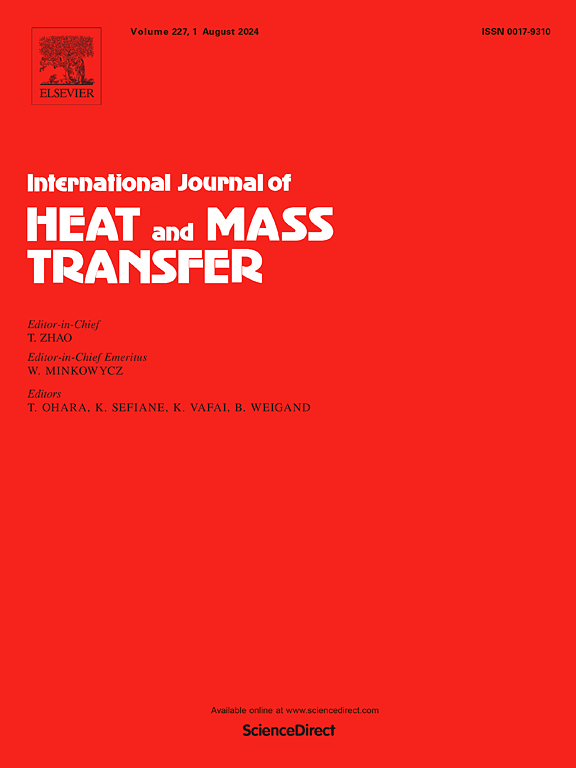Thermal boundary layer modelling for bubbles at saturation: A posteriori analysis
IF 5
2区 工程技术
Q1 ENGINEERING, MECHANICAL
International Journal of Heat and Mass Transfer
Pub Date : 2025-02-10
DOI:10.1016/j.ijheatmasstransfer.2025.126744
引用次数: 0
Abstract
This study investigates different temperature and flux coupling strategies in Direct Numerical Simulations (DNS) of bubbles at saturation, employing local one-dimensional thermal boundary layer sub-resolutions. Specifically, a laminar radial sub-resolution (LRS) near the interface is employed to address challenges in capturing sharp temperature variations, which is crucial for liquid–vapour heat transfer correlations. State-of-the-art techniques use analytical profiles to capture very thin boundary layers around single-rising objects for very high Prandtl or Schmidt numbers. The original approach proposed in Grosso et al. (2024) relies on a more general embedded sub-resolution still applicable at low Prandtl numbers and coarse grids. To accurately integrate the sub-layer variations into the CFD grid, the literature recommends using the sub-grid profiles to evaluate the Eulerian face fluxes instead of correcting cell temperature. From experience, it avoids excessive flux leakage from the sub-layer region at high Prandtl numbers. The present article investigates these coupling methods while proposing adaptations for thick boundary layers and very coarse grids in the context of LRS. Two test cases, pure diffusion acting around a sphere and a single rising bubble configuration, are explored, measuring heat flux at the interface and its transmission to the fluid domain serving as figures of merit for each coupling method. In low Prandtl bubbly flows (), and on coarse and affordable grids ( cells per bubble diameter), temperature coupling is found to be more stable though not conservative compared to flux coupling approaches. On the other hand, classical flux coupling strategies can exhibit artefacts and introduce potential instabilities with LRS. To overcome such problems, an improved local flux balance approach is proposed, demonstrating both robustness and efficiency in predicting and transmitting interfacial flux across the tested thermal layers’ thickness ranges.
求助全文
约1分钟内获得全文
求助全文
来源期刊
CiteScore
10.30
自引率
13.50%
发文量
1319
审稿时长
41 days
期刊介绍:
International Journal of Heat and Mass Transfer is the vehicle for the exchange of basic ideas in heat and mass transfer between research workers and engineers throughout the world. It focuses on both analytical and experimental research, with an emphasis on contributions which increase the basic understanding of transfer processes and their application to engineering problems.
Topics include:
-New methods of measuring and/or correlating transport-property data
-Energy engineering
-Environmental applications of heat and/or mass transfer

 求助内容:
求助内容: 应助结果提醒方式:
应助结果提醒方式:


